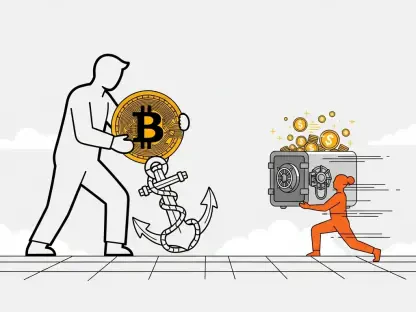In an era where digital transactions dominate daily life, the European Union has found itself at the center of a storm of misinformation regarding a supposed ban on cash, with viral social media posts painting a dystopian picture of a cashless society enforced by Brussels. Far from criminalizing the use of physical money, the EU is rolling out a targeted regulation under its Anti-Money Laundering package that introduces a €10,000 cap on cash payments for business transactions. This measure, set to be fully implemented in the coming years, has sparked confusion and fear among the public, with many believing that everyday purchases or personal savings are under threat. The reality, however, is far less dramatic, as the policy focuses narrowly on curbing financial crime while leaving personal dealings largely untouched. This article aims to separate fact from fiction, diving into the specifics of the new law, the reasoning behind it, and the broader implications for businesses and citizens across the bloc.
Understanding the New Cash Payment Regulation
Clarifying the €10,000 Business Transaction Cap
The core of the EU’s new regulation is a €10,000 limit on cash payments made to businesses, a rule designed to tackle money laundering and other illicit financial activities. Contrary to the sensational claims circulating online, this cap does not apply to private transactions between individuals unless stricter national laws are in effect. Everyday purchases, such as buying groceries or a cup of coffee, remain entirely unaffected, and there are no restrictions on how much cash a person can hold, save, or withdraw from their accounts. The focus is squarely on larger business dealings where cash can be used to obscure the origins of funds. For instance, a car dealership will no longer be able to accept cash payments exceeding the limit, but alternative methods like bank transfers or credit cards are still viable options. This nuanced approach seeks to balance the fight against crime with the practical needs of commerce, though public misunderstanding has often exaggerated the scope of these changes into a narrative of total cash elimination.
Scope and Exemptions of the Policy
Beyond the headline figure of €10,000, the policy’s scope reveals a deliberate effort to target specific vulnerabilities in the financial system without overreaching into personal freedoms. Transactions between private citizens, such as selling a used car or lending money to a friend, generally fall outside the regulation’s purview, providing a significant exemption that counters claims of a blanket cash ban. However, member states retain the authority to impose tougher restrictions if they see fit, which means that some countries might already have lower limits or additional rules in place. For businesses, adapting to this cap will require a shift toward digital payment systems, a transition that may pose challenges for smaller enterprises less equipped to handle such changes. The EU has allowed a transition period leading up to full implementation by 2027, giving stakeholders time to adjust. Still, the variation in national approaches—from Italy’s €5,000 limit to Austria’s lack of any cap—highlights the complexity of harmonizing rules across diverse economies and raises questions about consistent enforcement.
Addressing Misinformation and Future Implications
Debunking False Narratives Around Cash Use
Misinformation about the EU’s cash limit has spread like wildfire, with social media posts falsely asserting that buying big-ticket items like cars in cash will become outright illegal or that cash itself is being phased out entirely. Such claims ignore the regulation’s limited focus on business transactions and the availability of alternative payment methods for amounts exceeding €10,000. This wave of falsehoods fits into a broader pattern of conspiracy theories about cash policies in Europe, reminiscent of past rumors like Spain allegedly scrapping the €50 banknote or Nordic countries abandoning digital payments. These narratives often exploit public fears of losing financial autonomy, painting regulatory measures as authoritarian overreach. In reality, the EU’s policy is a pragmatic step to enhance transparency, not an attack on personal liberty. Addressing these misconceptions through clear communication is vital to prevent panic and ensure that the public understands the true intent and scope of the new rules.
Challenges and Skepticism Surrounding Effectiveness
While the EU’s intent to combat money laundering is clear—with studies estimating that 2-5% of global GDP, potentially up to €1.87 trillion, is laundered annually, and nearly 70% of criminal networks in the bloc relying on cash—skepticism persists about the €10,000 cap’s effectiveness. Critics argue that criminals are likely to adapt by turning to untraceable alternatives like cryptocurrencies or by exploiting cross-border loopholes to move cash undetected. The uneven landscape of national regulations further complicates the picture, as differing limits and enforcement practices across member states could undermine the goal of uniformity. The success of this measure, set to align with the establishment of a new Anti-Money Laundering Authority in Frankfurt by 2027, will depend on robust coordination among banks, businesses, and regulators. Without consistent application and adaptive strategies to counter criminal workarounds, the policy risks becoming a symbolic gesture rather than a transformative tool in the fight against financial crime.
Looking Ahead to Financial Transparency
Reflecting on the rollout of this regulation, the EU took a measured step in the past to address a pervasive issue, balancing the need for security with the preservation of individual freedoms. The €10,000 cash limit for business transactions marked a pivotal moment in the ongoing battle against money laundering, even as it faced hurdles in public perception and practical enforcement. Moving forward, the focus should shift to strengthening digital infrastructure to support businesses in transitioning away from high-value cash dealings, while also investing in public education to dispel lingering myths. Collaboration between member states must intensify to ensure uniform implementation, closing gaps that criminals might exploit. Additionally, monitoring emerging trends in illicit finance, such as the use of digital currencies, will be crucial to stay ahead of evolving threats. Ultimately, the legacy of this policy will hinge on the bloc’s ability to adapt and innovate, turning a well-intentioned regulation into a lasting framework for financial integrity.









